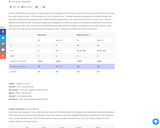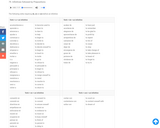
Students will learn the Spanish names of many animals as well as vocabulary related to animal parts.
- Subject:
- Spanish
- World Languages
- Material Type:
- Activity/Lab
- Provider:
- Jennifer Wagner
- Author:
- Jennifer Wagner
- Date Added:
- 02/26/2019

Students will learn the Spanish names of many animals as well as vocabulary related to animal parts.

Sudents will learn the vocabulary associated with clothing as well as the most common Spanish words used for fashion accessories, grooming articles, and footwear. Note that many of the words can vary with region, and some of the words can have other meanings in other contexts.

Students will learn how to form positive and negative familiar commands. They will also learn to form irregular affirmative and negative commands.

Students will learn the vocabulary associated with house and furniture as well as the most common Spanish words used for places and items in the house. Note that many of the words can vary with region, and many of the words can have other meanings in other contexts.

Students will learn that there are certain Spanish verbs that require a specific preposition to be used after them. These prepositions must follow the verb form to join them to an infinitive, although the preposition is not always translated into English.

Students will learn the vocabulary associated with nature including the most common Spanish words to describe land, atmosphere, seas and plants. Note that many of the words can vary with region, and some of the words can have other meanings in other contexts. This resource will enable students to participate in discussions on topics related to nature in the target language.

Students will learn the vocabulary associated with 45 different places in a city.

Students will learn how to express several ideas such as: to be able to, to have to do something, and must. Additionaly, students will learn another form of the verb to want that is quite useful to know for making requests and being polite.